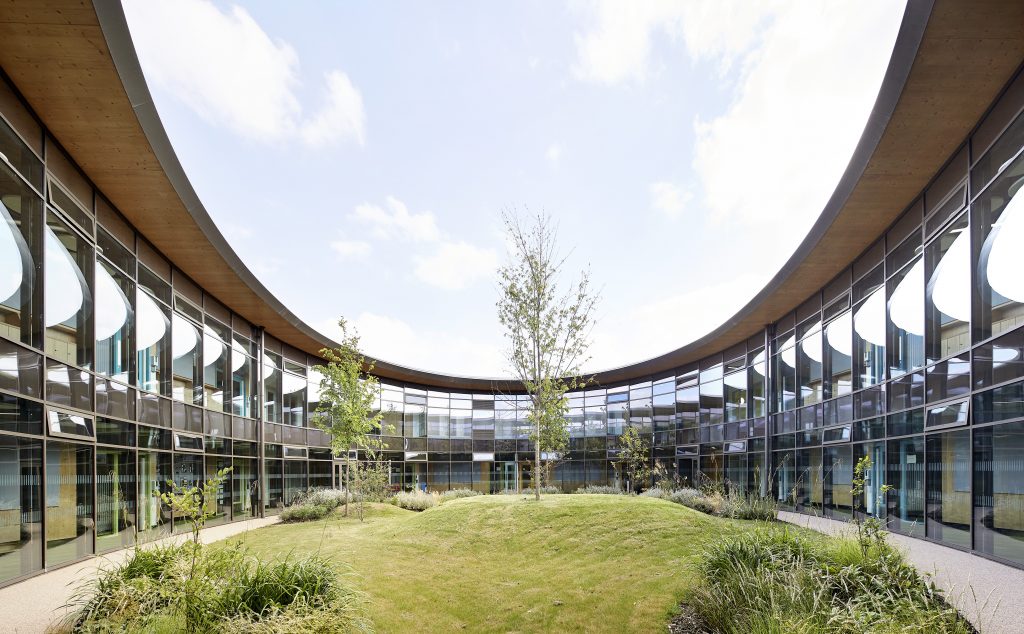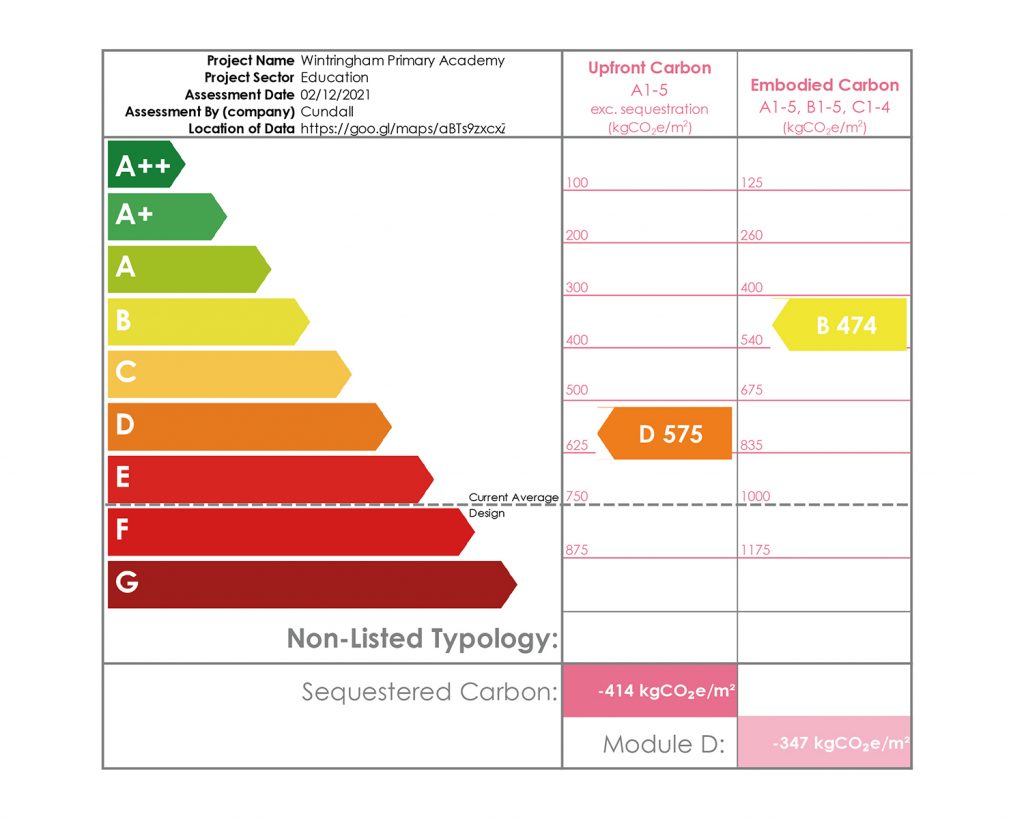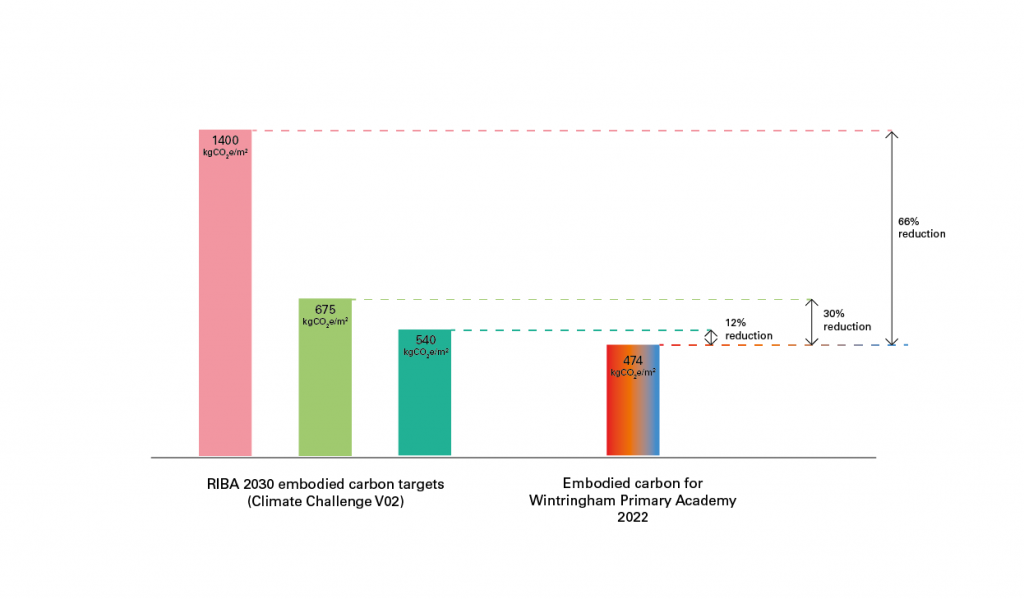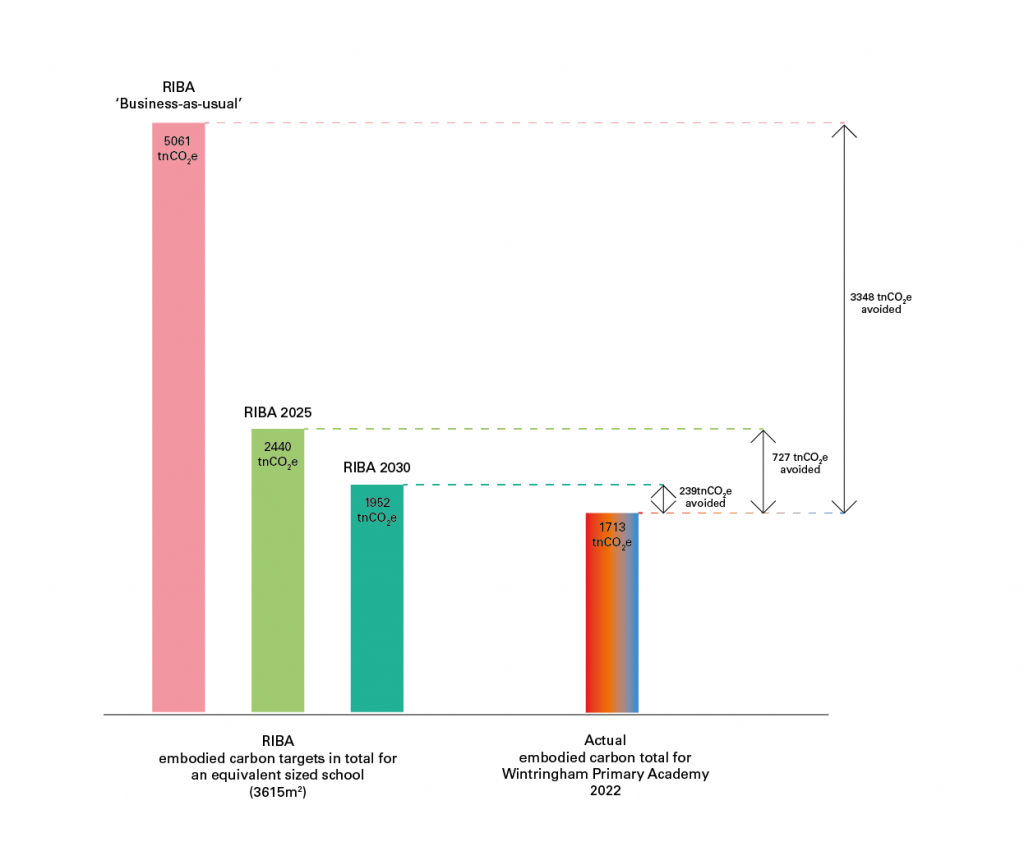Ergebnisse [0]

We are happy to share our first LETI rating & RIBA 2030 Climate Challenge benchmarked embodied carbon analysis for Wintringham Primary Academy
As a studio we are committed to sustainability and regenerative design. As part of our Architects Declare pledge we have committed to undertaking whole life carbon analysis of our projects and to sharing knowledge and research on an open source basis. So it is with great pleasure that we release benchmarked embodied carbon data for for a completed project for the first time.



Wintringham Primary Academy was designed from 2017 and constructed from 2018 onwards, so it predated the establishment of widespread understanding of embodied and whole life carbon in the architectural profession.
We are especially pleased therefore to find from the analysis, conducted by Sarah Linnell from Cundall, that this CLT school building is 12% less impactful than the RIBA 2030 target for schools and 66% less carbon than their Business-as-Usual benchmark.
It is rated as a LETI Rating ‘B’ for its Embodied Carbon impact of 474kgCO2/m2 (A1-5, B1-5, C1-4) and a ‘D’ for its Upfront Carbon impact of 575kg CO2/m2 (A1-5 only, with sequestration excluded per standard practice).
Comparing the school to equivalent carbon total impacts based on the RIBA 2030 Climate Challenge targets showcase the real significance of carbon avoided – some 3348 tonnes CO2e are avoided as compared to a theoretical RIBA Business-as-Usual school of the same area. This is the same amount of carbon as avoiding 3,301 return flights from London Heathrow to New York JFK airport[i].
From this study it is clear that the sequestration of carbon in the timber superstructure is a key contributer to the positive outcome of this study, in combination with our approach of expressing the timber internally with minimal additional layers of material only introduced where needed for environmental or comfort purposes.
While we are pleased with this study’s outcomes, there is further room for improvement in reductions in carbon emissions relating to the construction of the building, and we will be seeking to learn from this study to inform our approach to future building designs. The total impact of Wintringham Primary Academy is still some 1713 tonnes CO2e (including sequestration). This is a powerful reminder of how impactful the design of buildings can be, and how much agency we have as designers to reduce carbon. What this also highlights is the limitation of per sqm carbon ratings – the bigger your building, the bigger the total impact no matter how low your per sqm rating. We must not forget to consider making spatial efficiencies through early stage design processes to avoid unnecessarily increasing the gross impact of what we design – this is not necessarily incentivised by current calculation and declaration methods, and mostly is driven by cost-saving efforts instead.
We see real value in sharing this study’s outcomes with a wider audience, and hope this demonstrates the potential mass timber offers as a means for decarbonising construction. dRMM intend to continue to share more project data in the future, including more detail on the holistic sustainability strategies in place in our Wintringham Primary Academy project.
[i] According to the Guardian Carbon Calculator a flight from LHR to NY JFK is 0.986tonnes CO2. https://www.theguardian.com/travel/2019/jul/31/carbon-calculator-find-out-how-much-co2-your-flight-will-emit
In the spirit of transparency and openness that is essential if our industry is to decarbonise and avoid irretrievable climate breakdown, we share the full analysis for Wintringham Primary Academy.
We will seek opportunities in the future to undertake further analysis on Wintringham Primary Academy with regards to operational energy and water use and share further data. Learning about the performance of our buildings is an ongoing process and is never truly finished.
You can view the detailed LETI benchmarking here.